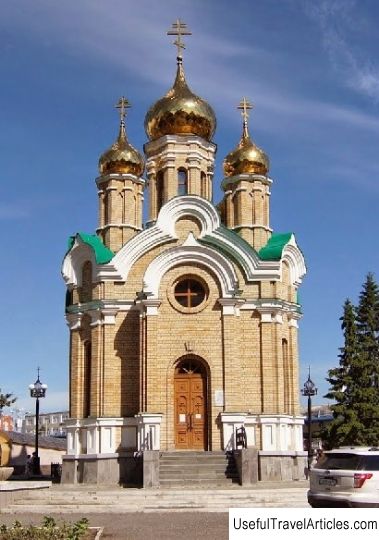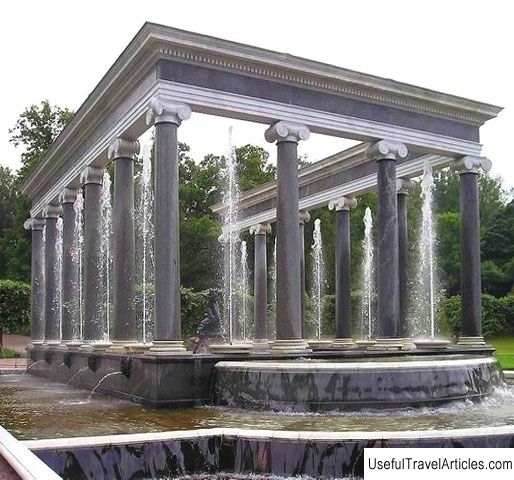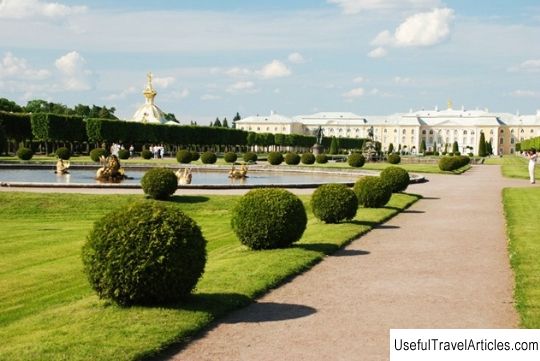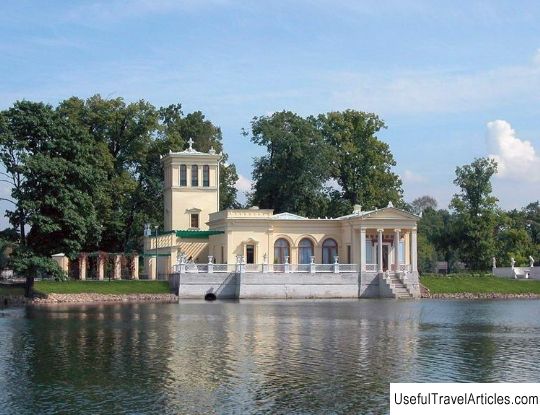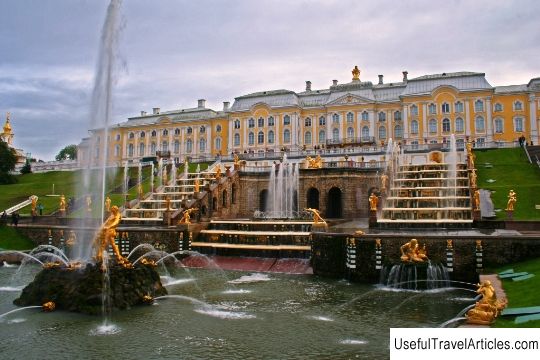Voronikhinsky colonnades description and photos - Russia - St. Petersburg: Peterhof
Rating: 9,3/10 (5694 votes) 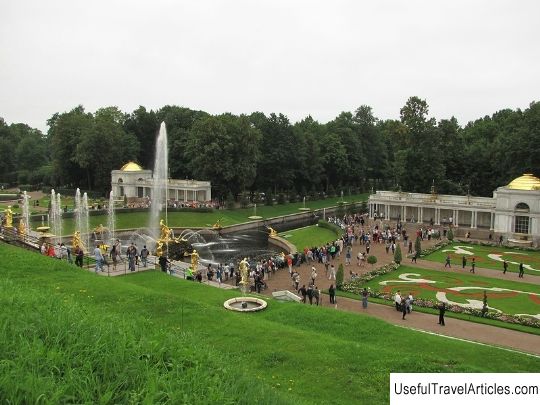
Voronikhinsky colonnades description and photos - Russia - St. Petersburg: Peterhof. Detailed information about the attraction. Description, photos and a map showing the nearest significant objects. Photo and descriptionSlender white marble Voronikhinsky colonnades with gilded domes and vases, like backstage, separate the parterre flower beds from the green massif of the Lower Park. Their facades are 21 meters long. From the tops of the domes, which are at a height of 9 meters, water gushes. Flowing down the domes and covering the huge semicircular windows of the pavilions with invisible tulle, it enters the pools made of marble. The streams also shimmer over three gilded vases placed on the roof of the colonnade. White marble balustrades and cornices, gray marble columns exist in harmony with the pink granite of the stairs, plinth and paired lion sculptures made of the same material. Lions symbolize the guards at the entrance to the colonnade. On the site of the colonnade in Peter's time, small wooden "galleries with closets" were located, in which, according to the plan of M. Zemtsov, it was supposed to install 7 fountains. Of the “water curiosities” conceived by Peter the Great in the gallery on the east side, the “bell gambler” I. Foerster placed only the clockspiel, which is a musical instrument with crystal bells made at the Yamburg glass factory. In 1745, a water organ, or, as it was called, the "jaeger piece", was installed in the western gallery by the master Balthazar Fries. When the organ played, the water made painted sculptures made of wood move - a gamekeeper who blew a horn, satyrs who played flutes, dogs chasing a deer, and 12 songbirds barking. The sounds in the figures of the organ were reproduced using bellows. Instead of dilapidated wooden galleries in 1800-1803, according to the project of A. Voronikhin, brick finished with Pudost stone, with marble columns, porches and granite base. Gilded fountain bowls made of lead were placed on the colonnades, the domes were covered with sheets of gilded brass and "water-operated pipes" were brought out to their tops. On the porches were installed sculptures of lions, made according to the models of I. Prokofiev. A. Voronikhin was awarded the title of architect for the plan of the Peterhof colonnades. According to historical tradition, the name of the Voronikhinsky was established behind them. 50 years later, A. Stakenschneider faced the Voronikhinsky colonnades with Carrara marble. Was used 30,000 pounds of this noble material. At the same time, the floors of the colonnades were covered with colored Venetian mosaics. During the occupation of Peterhof, the decoration of the colonnades was seriously damaged, the lining of the domes and the fountain vases were stolen. In 1966, restoration work took place, as a result of which the restorers returned the lost appearance to the Voronikhinsky colonnades.         We also recommend reading New Town Hall (Neues Rathaus) description and photos - Germany: Munich Topic: Voronikhinsky colonnades description and photos - Russia - St. Petersburg: Peterhof. |
